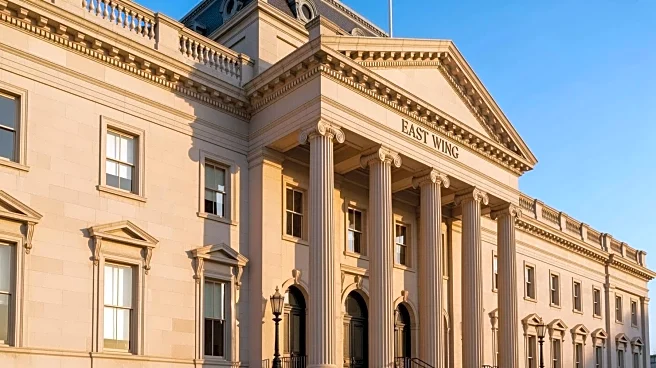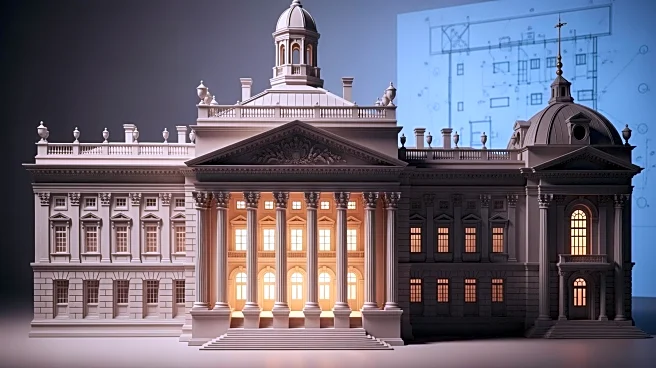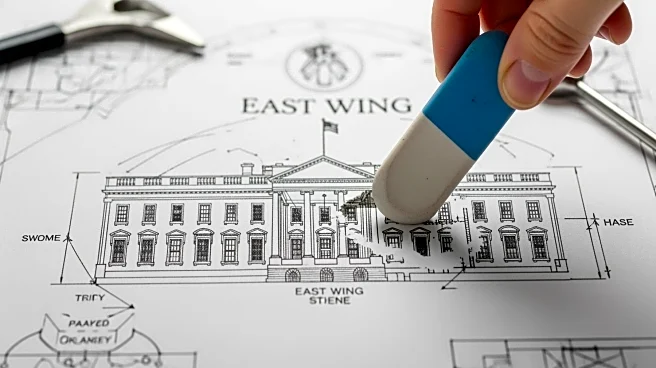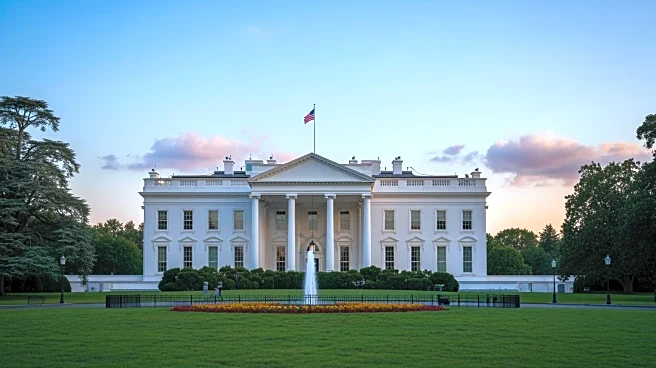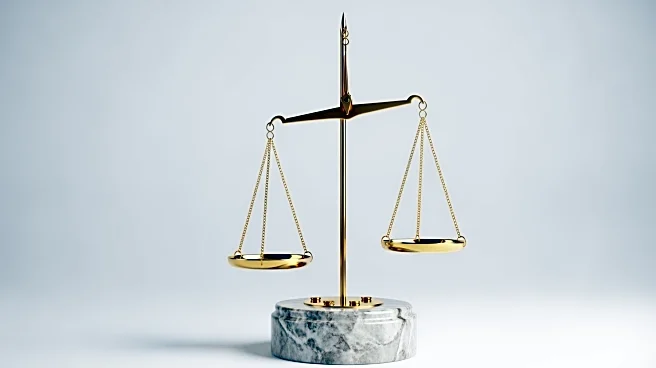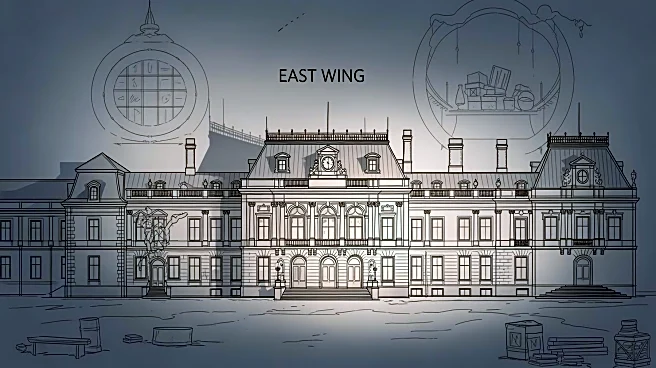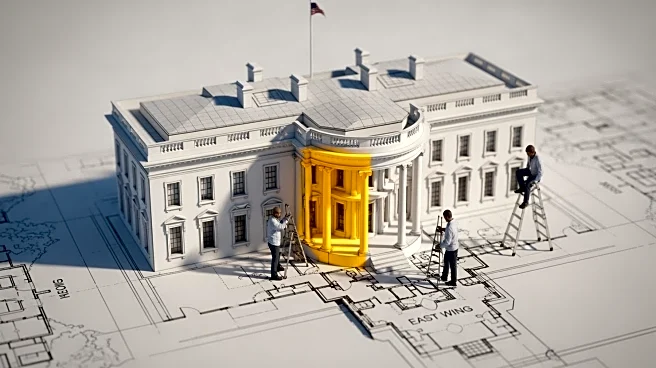What's Happening?
President Trump has announced plans to demolish the existing structure of the White House East Wing to construct a new ballroom. This decision has sparked significant controversy among Democrats and conservation
groups, including the National Trust for Historic Preservation, which has called for a public review process. Despite assurances that the addition would not interfere with the current building, the sight of demolitions has raised concerns about the preservation of historical architecture. Under a nearly-60-year-old law, the White House is exempt from a key historic preservation rule, although presidents typically adhere to it voluntarily. Trump's renovation is set to be the largest in decades, following a tradition of presidential renovations that have included features like a bowling alley and an indoor swimming pool.
Why It's Important?
The planned demolition and reconstruction of the White House East Wing by President Trump highlight the tension between development and historical preservation. The exemption from the National Historic Preservation Act's Section 106 review process allows the President to make changes without mandatory public input, raising concerns about the preservation of cultural and historical landmarks. This move could set a precedent for future administrations regarding the extent of modifications permissible to historically significant buildings. The controversy underscores the ongoing debate between modernization and conservation, with potential implications for how historical sites are managed in the U.S.
What's Next?
While Trump officials have stated plans to submit the renovation proposal to the National Capital Planning Commission, the construction has already begun, raising questions about the adherence to traditional review processes. The reaction from conservation groups and political opponents may lead to increased scrutiny and calls for legislative changes to ensure more rigorous preservation standards. The outcome of this situation could influence future policies on the management of historically significant federal properties.
Beyond the Headlines
The exemption of the White House from the Section 106 review process reflects broader issues in historic preservation laws, highlighting the balance between executive power and cultural heritage protection. This situation may prompt discussions on the ethical responsibilities of preserving national landmarks and the role of public engagement in governmental decisions affecting historical sites.
